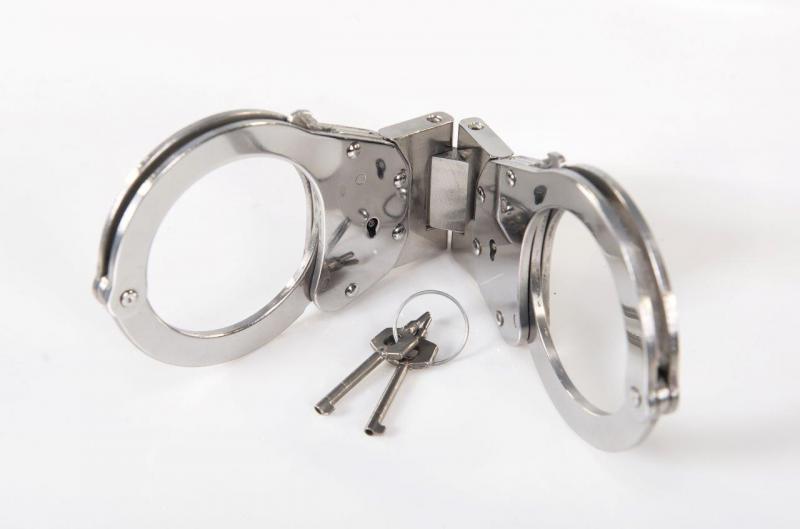Hinge Handcuffs type KM 2500


Zapytaj o produkt
Z chęcią odpowiemy na wszelkie pytanie dotyczące tego produktu
Tel 693 340 111
email: kelmet@kelmet.pl
Hinge Handcuffs type KM 2500
Description of our hinged handcuffs:
The unique advantage of our hinged handcuffs is that they combine the features of typical hinged handcuffs and rigid handcuffs, without the additional keys and latches for locking the hinges.
The unique solution is to use a single-sided hinge so that they can be folded like regular chain handcuffs and hidden in a typical holster. At the same time, they open to only 180ᵒ, which causes the detainee to have very limited freedom of movement and the officer can safely grasp the middle of the handcuffs and lead without touching detainees, just as in rigid handcuffs. The condition is one - the stiff part of the outside and the hinge part to the stop. Thanks to this natural limitation of the hinge movement are the forearms of the delicacy itself. An additional advantage of such handcuffs is that the keyhole holes are on the retracted side and its hands project on the side without holes. Thanks to this person so constrained cannot access the holes and even having the original key is unable to open these handcuffs.
We are one of the few manufacturers that make full stainless steel handcuffs in accordance with PN-EN 10088-1 standard. No galvanic layer is plated (Ni, Zn). Production is in accordance with EU Directive 76/769/EEC-94/27/EEC and following its Polish Ordinance (under work) about not using nickel layers in products that have contact with skin. Stainless steel is hypoalergic and highly durable.
We offer our stainless steel handcuffs together with two keys. Made according to General Police Headquarters recommendation. In the design phase, we inquired GPH what are the parameters of an ideal product. It turned out we were able to provide a product that meets all requirements.
Our product is characterized by wide wrist space which makes it outstanding in comparison with similar foreign products. This modification is a result of the demand existing among services in Poland and our determination to adjust to the needs of our clients.
Construction details:
Our handcuffs has following charasteristics:
- They enable easy, fast and efficient cuffing.
- It is not possible for the cuffed person to release the cuffs by the strenght of muscles or simple objects one can find around.
- They consist of two symmetric clamps, connected by a single-sided hinge, rigidly connected to the wrist bands;
- The construction consists of steel shackles with backstop clamp mechanizm and swinging single strand.
- Blocking mechanizm is in both cases, which allows to block the ratchet in every position not pressing the cuffed person too much and additionaly locking the cuffs – double lock tip on the key locks the cuffs and turnig the key in the keypost releases the cuffs.
- Its construction, when used properly, does not cause abrasion or injury.
- They are equipped with two keys, which enable opening, closing handcuffs, and locking and unlocking rack;
- All Keys to handcuffs are made of stainless steel, without galvanic coatings, that matches most handcuffs of reputable companies in the world, and their manufacturing technology provides full dimensional repetition;
- The hinge structure allows handcuffs to be folded into a typical holster, and after spreading to 180ᵒ, they acquire the features of rigid handcuffs significantly reducing the freedom of movement of the restrained person.
Materials:
- Handcuffs are made of stainless steel that is not toxic to human organism, there are no galvanic layers on the strands.
- Weight: 450 g.
Resistance characteristics:
- Handcuffs are resistant to static tearing force measuring up to 2300N (force applied to the one clamp, the other clamp fixed). After the test handcuffs remain usable.
- Handcuffs are resistant to static bending force measuring 500N (clamp fixed with single-sided hinge, force applied vertically to the surface of the clamp on the other extremity). The force is not causing permanent deformation.



